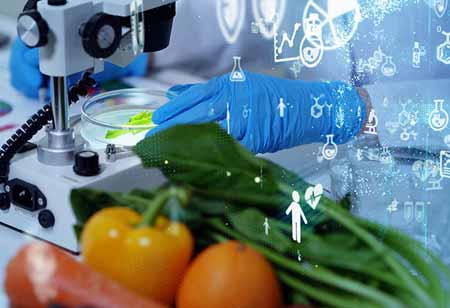THANK YOU FOR SUBSCRIBING
Be first to read the latest tech news, Industry Leader's Insights, and CIO interviews of medium and large enterprises exclusively from Food and Beverage Tech Review
What Does the Future of Poultry Plant Look Like?
Humans are on the verge of the fourth industrial revolution, also known as Industry 4.0, which is characterized by the convergence of numerous technologies such as robotics, artificial intelligence (AI), virtual reality (VR), autonomous system

By
Food and Beverages Tech Review | Friday, January 28, 2022
Stay ahead of the industry with exclusive feature stories on the top companies, expert insights and the latest news delivered straight to your inbox. Subscribe today.
Technology advancements are revolutionizing the poultry production and processing industries, which will appear significantly different in the coming years than they do now.
Fremont, CA: Humans are on the verge of the fourth industrial revolution, also known as Industry 4.0, which is characterized by the convergence of numerous technologies such as robotics, artificial intelligence (AI), virtual reality (VR), autonomous systems, nanotechnologies, quantum computing, and a fully interconnected internet-of-things. Since it envisions a future manufacturing floor without the requirement for people to be physically present.
In 20 years, a future chicken processing facility could look significantly different, owing to the emerging Industry 4.0 paradigm. While the poultry industry's automation is advanced compared to other animal protein manufacturing/processing operations, a closer examination indicates that the basic processing activities have remained largely unchanged for the past 50 years.
The "lot size of one" notion will very certainly be central to any future processing plant. When compared to traditional production, the natural unpredictability, flexibility, and destructive qualities of poultry processing, as well as the food safety and perishable nature of the product, have all been roadblocks. Automation of targeted throughput, yield, and quality metrics has been hampered by these issues. Many of these problems can be solved under the Industry 4.0 paradigm, in which each carcass is scanned thoroughly and processed as a single unit or lot.
The function and role of labor on the processing plant floor have also changed dramatically. It is possible to have workers virtually operate or support robotic systems from anywhere using VR equipment that is connected to processing plant work cells. Employees will operate remotely to support robotic processing work cells, which will handle only the most complex or challenging activities that smart technologies cannot perform on their own.
I agree We use cookies on this website to enhance your user experience. By clicking any link on this page you are giving your consent for us to set cookies. More info







